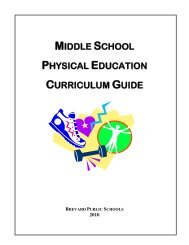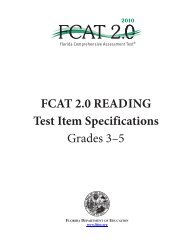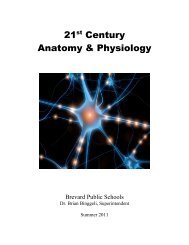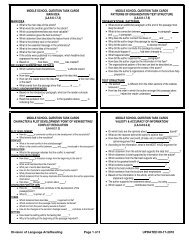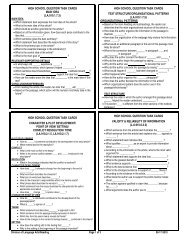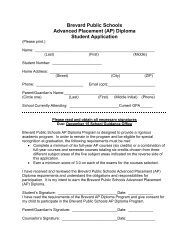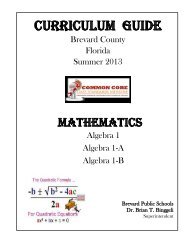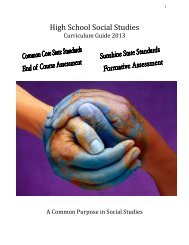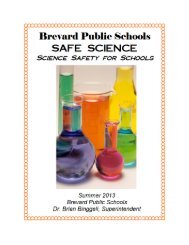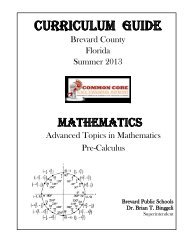Science Research Program Guide - Secondary Programs Home ...
Science Research Program Guide - Secondary Programs Home ...
Science Research Program Guide - Secondary Programs Home ...
You also want an ePaper? Increase the reach of your titles
YUMPU automatically turns print PDFs into web optimized ePapers that Google loves.
Lesson Title: Bernoulli’s Cans<br />
Sunshine State Standards:<br />
o (S.C.C. 2.3.3 &4) The student understands that unbalanced forces will cause<br />
changes in the speed or direction of an object's motion.<br />
o (S.C.B. 2.3.1,2&3) Students understands that energy is a property of many<br />
substances and is associated with mechanical motion. And that energy is<br />
transferred in many ways.<br />
Background In 1738, a Swiss mathematician Daniel Bernoulli studied the relationship<br />
between the pressure and velocity of a fluid. The Bernoulli Principle states that as the<br />
speed of a moving fluid increases, the pressure within the fluid decreases.<br />
Objective: The goal of this lesson is to help students understand -<br />
o how unbalanced forces work<br />
o how energy is transferred<br />
o how objects move when a net force is applied.<br />
Time: One- 55 Minute class period.<br />
Materials: (per 2 student group) 2 empty soft drink cans, 25 non-bendable straws, flat<br />
table top.<br />
Lesson/Procedures:<br />
Engage:<br />
o Demonstrate the action of forces by placing “weighted” bird on finger tip and<br />
ask students for explanations as to what is holding the bird up.<br />
o Add small additional weights to either wing and ask students to predict what<br />
would happen.<br />
o Discuss balanced, unbalanced and net forces and forces acting on an object<br />
to keep it floating.<br />
o Discuss what net forces allow an object to move.<br />
Explore:<br />
o Have students place 23 straws on the table parallel to each other, about 1 cm<br />
apart.<br />
o Then students place the cans upright on the rack of straws. The cans should<br />
be able to roll freely back and forth.<br />
o The cans should be approximately 5 cm apart.<br />
o Using the straw, blow air between the cans.<br />
o Students make guided observations<br />
76



